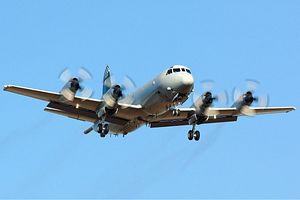Vietnam is considering the purchase of F-16 fighter jets and refurbished P-3C Orion maritime patrol aircraft armed with torpedoes, an unnamed U.S. defense industry source told Defense News this week. Hanoi also expressed interest in unarmed U.S. drones for monitoring its territorial waters and the wider South China Sea.
The sale would occur under the Department of Defense’s Excess Defense Articles program, which provides used U.S. military equipment to partner nations at a reduced price. Vietnam seeks deals similar to ones the United States gave to Taiwan and Indonesia, according to the the source. Under the program Taiwan has procured 12 P-3C maritime patrol aircraft and Indonesia 12 F-16 A/B fighter jets.
Vietnam’s interest in Western military hardware is nothing new. However, given the recent announcement that the United States will lift a decades-old embargo on the sale of lethal military equipment to Vietnam, Hanoi’s deliberations deserve renewed attention from the U.S. defense industry.
In the past, Vietnam has also expressed interest in the Eurofighter Typhoon, the Saab JAS-39E/F Gripen NG, South Korea’s F/A-50 lightweight fighter and the Boeing F/A-18E/F Super Hornet. The Vietnam People’s Air Force is allegedly also interested in procuring a squadron of Sukhoi Su-35S multirole fighter jets.
Defense News also obtained an unclassified briefing prepared by U.S. Pacific Command outlining that Vietnam seeks to bolster its presence in the South China Sea with upgrades for submarine warfare, maritime air-ground interdiction, anti-surface warfare, anti-submarine warfare, maritime domain awareness (MDA), early warning, and command, control, communications, computers, intelligence, surveillance and reconnaissance.
Vietnam’s military modernization efforts potentially offer a huge opportunity for the U.S. defense industry. However, as I reported previously (See: “For Russia, US Lifting Vietnam Arms Embargo Will not Affect Military Exports”) there are a number of factors that may slow down the introduction of U.S. military hardware:
Russia, however, remains the country’s most important long-time partner in the field of bilateral military-technical cooperation, although the relationship is not entirely frictionless. Still, the majority of Vietnamese military hardware is Russian and Russia continues to provide military training to all of Vietnam’s military services.
Furthermore, Vietnam will simply not have the funds for large ticket items given its spiraling public debt, which will make the acquisition of a new fleet of modern aircraft very unlikely. Vietnam is also in the process of expanding its naval forces, including adding six Russian-made 4,000-ton Type 636 Kilo-class diesel-electric submarines (five of which have been delivered so far)—an acquisition that has drained the Vietnamese defense budget.
Also, future weapons sales will likely depend on improving the human rights and strengthening civil liberties in Vietnam, given that any sale is subject to congressional approval. The power in the country continues to lie firmly with the ruling Communist Party and human rights activists and opposition members are still harassed and subject to arbitrary detention. There is also still no independent media allowed in Vietnam.

































